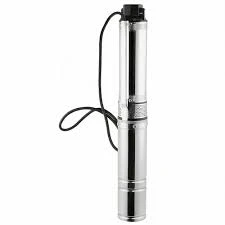Nov . 23, 2024 03:35 Back to list
how to wire a submersible well pump
How to Wire a Submersible Well Pump
Wiring a submersible well pump is a critical task that ensures the efficient operation of your water supply system. While this process can be complex, with careful planning and adherence to safety guidelines, you can successfully complete the task. Whether you’re replacing an existing pump or installing a new one, this guide will provide you with essential steps and important considerations to safely wire your submersible well pump.
Understanding the Components
Before you start the wiring process, it’s important to understand the components involved. A submersible well pump typically consists of the following
1. Pump The electric motor and the pump assembly that lift water from the well. 2. Control Box A protective enclosure that holds electrical connections and controls. 3. Power Source The electrical supply that powers the pump. 4. Electrical Wiring Wires that connect all components, including the pump, control box, and power source.
Safety First
Safety is paramount when working with electrical components. Before starting any wiring tasks, ensure that you have the necessary tools, including wire cutters, a wire stripper, a multimeter, and screwdrivers. Additionally, follow these safety precautions
- Turn Off Power Always disconnect the power supply before beginning any work on electrical systems. - Use Waterproof Connections Submersible pumps are exposed to moisture, so use waterproof connectors and cables designed for underground use. - Grounding Ensure that the pump and its components are properly grounded to prevent electrical shock.
Step-by-Step Wiring Process
1. Locate the Control Box The control box is usually installed above ground. This is where you’ll make the main electrical connections. Ensure it’s easily accessible for any future maintenance.
how to wire a submersible well pump

2. Prepare the Electrical Cable Use a submersible pump wire that is suitable for underground use, typically a 3-wire or 4-wire configuration. The cable should consist of two hot wires, a ground wire, and, if required, a neutral wire.
3. Strip the Wires Carefully strip the ends of the wires using a wire stripper. Make sure to expose enough copper to make a secure connection but avoid stripping too much to prevent shorts.
4. Connect the Wires Inside the control box, match the wires from the pump to the corresponding wires in the box. Typically, this will follow a color-coded system - Connect the two hot wires (usually black and red) to the appropriate terminals. - Connect the ground wire (green or bare copper) to the ground terminal. - If applicable, connect the neutral wire (white) to the neutral terminal.
5. Seal Connections After all connections are made, ensure they are secure and properly insulated. Use waterproof connectors and wrap connections with electrical tape for added protection.
6. Install the Pump Carefully lower the pump into the well casing while ensuring the electrical cable does not become pinched or damaged. It’s advisable to use a rope or other lifting mechanism for heavy pumps to avoid strain.
7. Connect to the Power Source Run the cable from the control box to the main power supply, making sure to keep it away from other utilities. Follow local electrical codes when making this connection, as improper wiring can cause hazards.
8. Test the System Once all connections are secure, turn the power back on and test the pump. Monitor for any abnormal sounds or leaks. If everything functions correctly, you’ve successfully wired your submersible well pump.
Conclusion
Wiring a submersible well pump may seem daunting, but with the right preparation and caution, it can be accomplished safely and efficiently. Always prioritize safety, adhere to local codes, and consult a professional if you’re unsure about any steps in the process. A well-installed pump not only ensures a reliable water supply but also contributes to the longevity of your system.
-
Submersible Water Pump: The Efficient 'Power Pioneer' of the Underwater World
NewsJul.01,2025
-
Submersible Pond Pump: The Hidden Guardian of Water Landscape Ecology
NewsJul.01,2025
-
Stainless Well Pump: A Reliable and Durable Pumping Main Force
NewsJul.01,2025
-
Stainless Steel Submersible Pump: An Efficient and Versatile Tool for Underwater Operations
NewsJul.01,2025
-
Deep Well Submersible Pump: An Efficient 'Sucker' of Groundwater Sources
NewsJul.01,2025
-
Deep Water Well Pump: An Efficient 'Sucker' of Groundwater Sources
NewsJul.01,2025
-
 Submersible Water Pump: The Efficient 'Power Pioneer' of the Underwater WorldIn the field of hydraulic equipment, the Submersible Water Pump has become the core equipment for underwater operations and water resource transportation due to its unique design and excellent performance.Detail
Submersible Water Pump: The Efficient 'Power Pioneer' of the Underwater WorldIn the field of hydraulic equipment, the Submersible Water Pump has become the core equipment for underwater operations and water resource transportation due to its unique design and excellent performance.Detail -
 Submersible Pond Pump: The Hidden Guardian of Water Landscape EcologyIn courtyard landscapes, ecological ponds, and even small-scale water conservancy projects, there is a silent yet indispensable equipment - the Submersible Pond Pump.Detail
Submersible Pond Pump: The Hidden Guardian of Water Landscape EcologyIn courtyard landscapes, ecological ponds, and even small-scale water conservancy projects, there is a silent yet indispensable equipment - the Submersible Pond Pump.Detail -
 Stainless Well Pump: A Reliable and Durable Pumping Main ForceIn the field of water resource transportation, Stainless Well Pump has become the core equipment for various pumping scenarios with its excellent performance and reliable quality.Detail
Stainless Well Pump: A Reliable and Durable Pumping Main ForceIn the field of water resource transportation, Stainless Well Pump has become the core equipment for various pumping scenarios with its excellent performance and reliable quality.Detail
